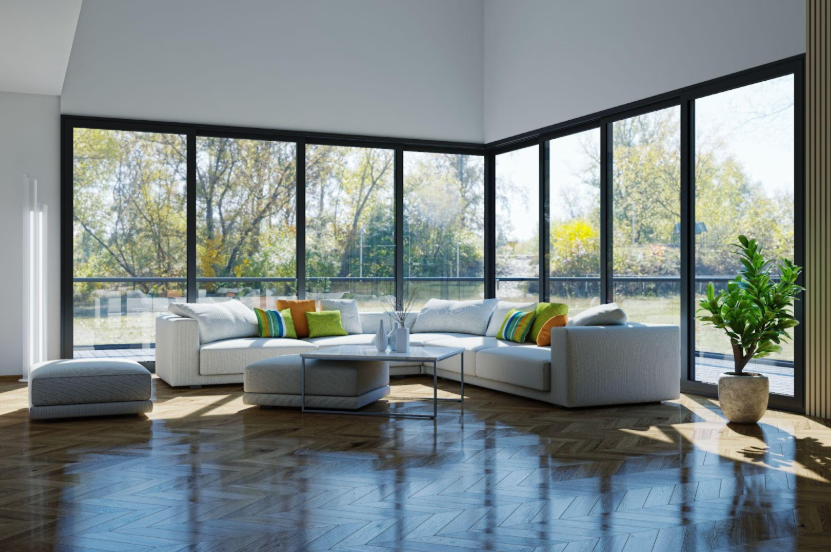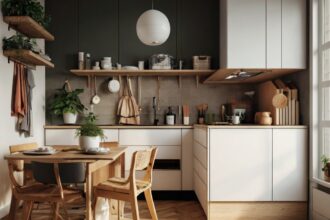Windows Aren’t Accessories. They’re the Infrastructure of Mood


We’ve been misled. Somewhere between Pinterest boards and HGTV marathons, we started thinking of windows as aesthetic bonuses. Like crown molding or vintage mirrors. Pretty, optional, replaceable.
They’re not. Windows are how your house breathes. They’re how you feel sunlight before coffee. How your body wakes up before your brain can complain. If you’ve ever walked into a room and felt instantly lighter, odds are, it wasn’t the paint. It was the windows.
Table of Contents
- 1 Light Isn’t Just Pretty. It’s Performance-Enhancing
- 2 The View Shapes Your Headspace
- 3 Shape, Scale, and the Space You Didn’t Know You Needed
- 4 Temperature Control Isn’t a Bonus. It’s a Boundary
- 5 Soundproofing Is Self-Preservation
- 6 Mood Is Physical. Windows Make It Tangible
- 7 This Is Design That Doesn’t Apologize
Light Isn’t Just Pretty. It’s Performance-Enhancing
Natural light does things artificial bulbs can’t. It sharpens your focus. Softens your mornings. Gives your dopamine a reason to get out of bed. This isn’t spiritual. It’s chemical.
Serotonin rises when you sit near a sunlit window. Your circadian rhythm gets back in sync. Your eyes strain less, your sleep gets better, and suddenly your 2 PM crash feels less like a personal failure and more like a lighting issue.
This is what real mood infrastructure looks like. Not a candle. Not a mood board. Glass.
The View Shapes Your Headspace
You’re not just looking out the window. You’re absorbing what’s out there. Your nervous system notices whether it’s sky, concrete, grass, or someone else’s bathroom window.
When the view expands, so do you. You feel more in control. More capable. More awake. If all you see is brick, your brain shrinks into survival mode. But if you can catch a sliver of skyline, or watch light move across leaves, everything shifts.
You don’t need a beachfront balcony. You just need glass that knows where to point.
Shape, Scale, and the Space You Didn’t Know You Needed
Window shape isn’t just about style. It’s spatial psychology. A tall, narrow window draws the eye up. A wide rectangle grounds you. Floor-to-ceiling panels make you feel like your square footage doubled overnight.
Grids make things feel stable. Panes make things feel intentional. A single sheet of glass? Modern, bold, slightly dangerous in the best way.
Every decision—from frame width to placement—changes how your room breathes. And how you do too.
Temperature Control Isn’t a Bonus. It’s a Boundary
A good window doesn’t just look right. It keeps your energy bills from spiraling. It buffers noise. It stops drafts before they hijack your comfort.
Double-pane and triple-pane windows trap temperature. Laminated glass blocks out chaos. Low-E coatings, like the ones used in Golden Windows, filter sunlight like the skincare routine your living room didn’t know it needed.
It’s not luxury. It’s not a flex. It’s you deciding that you get to feel good at home, consistently, without fighting the thermostat.
Soundproofing Is Self-Preservation
When you can hear every car, dog, or garbage truck like it’s inside your brain, your body never fully relaxes. That tension sits in your shoulders. Your gut. Your sleep.
Windows can stop that. They can buffer the world. Muffle what doesn’t belong to you. Give your nervous system room to come down from alert mode.
Call it sound control. Call it self-respect. Either way, silence becomes sacred.
Mood Is Physical. Windows Make It Tangible
It’s not just about light or air. It’s about how you feel inside your own life. A well-lit room makes you want to stay. A stale one makes you leave, even if you don’t realize why.
When your space breathes, you breathe better. When your room feels open, your thoughts do too. That’s not coincidence. That’s infrastructure.
This Is Design That Doesn’t Apologize
So no, your windows aren’t accents. They’re not background. They’re not cute. They’re foundational. Like plumbing, but for your peace of mind.
If you want your home to support your energy, your creativity, your nervous system—start here. With the windows. With the frame. With the light you didn’t know you were missing until you finally saw it right.






